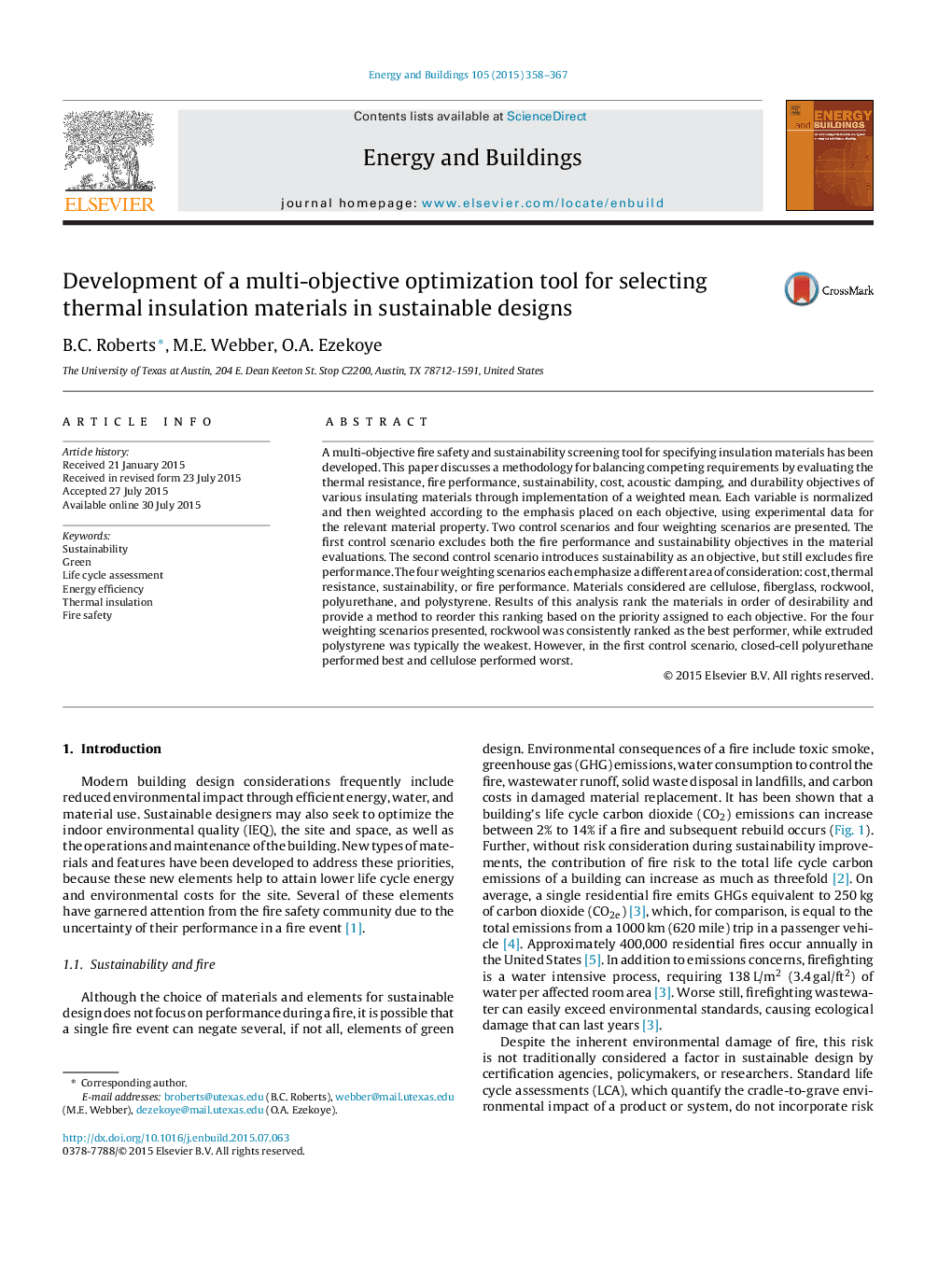| کد مقاله | کد نشریه | سال انتشار | مقاله انگلیسی | نسخه تمام متن |
|---|---|---|---|---|
| 262397 | 504030 | 2015 | 10 صفحه PDF | دانلود رایگان |
• A fire safety and sustainability screening tool for insulation was developed.
• Considered are cellulose, fiberglass, rockwool, polyurethane, and polystyrene.
• Evaluated are thermal, fire, sustainability, cost, acoustic, and durability properties.
• In a control scenario, closed-cell polyurethane performed best and cellulose worst.
• Otherwise, rockwool performed best and extruded polystyrene worst.
A multi-objective fire safety and sustainability screening tool for specifying insulation materials has been developed. This paper discusses a methodology for balancing competing requirements by evaluating the thermal resistance, fire performance, sustainability, cost, acoustic damping, and durability objectives of various insulating materials through implementation of a weighted mean. Each variable is normalized and then weighted according to the emphasis placed on each objective, using experimental data for the relevant material property. Two control scenarios and four weighting scenarios are presented. The first control scenario excludes both the fire performance and sustainability objectives in the material evaluations. The second control scenario introduces sustainability as an objective, but still excludes fire performance. The four weighting scenarios each emphasize a different area of consideration: cost, thermal resistance, sustainability, or fire performance. Materials considered are cellulose, fiberglass, rockwool, polyurethane, and polystyrene. Results of this analysis rank the materials in order of desirability and provide a method to reorder this ranking based on the priority assigned to each objective. For the four weighting scenarios presented, rockwool was consistently ranked as the best performer, while extruded polystyrene was typically the weakest. However, in the first control scenario, closed-cell polyurethane performed best and cellulose performed worst.
Journal: Energy and Buildings - Volume 105, 15 October 2015, Pages 358–367
